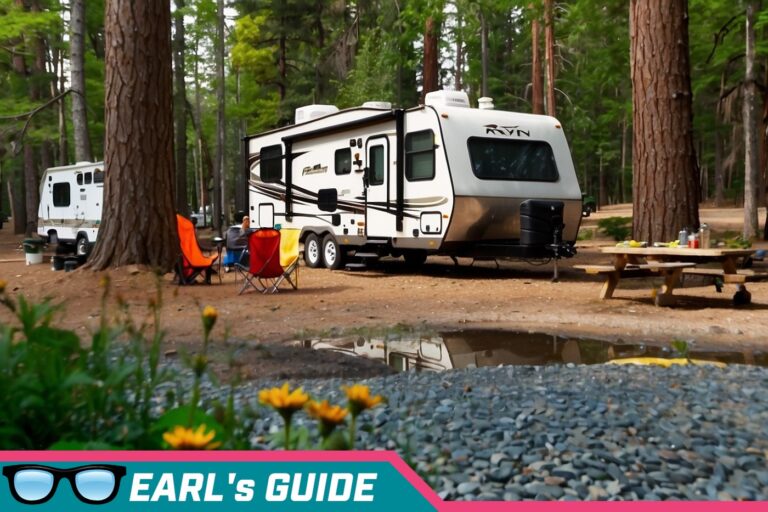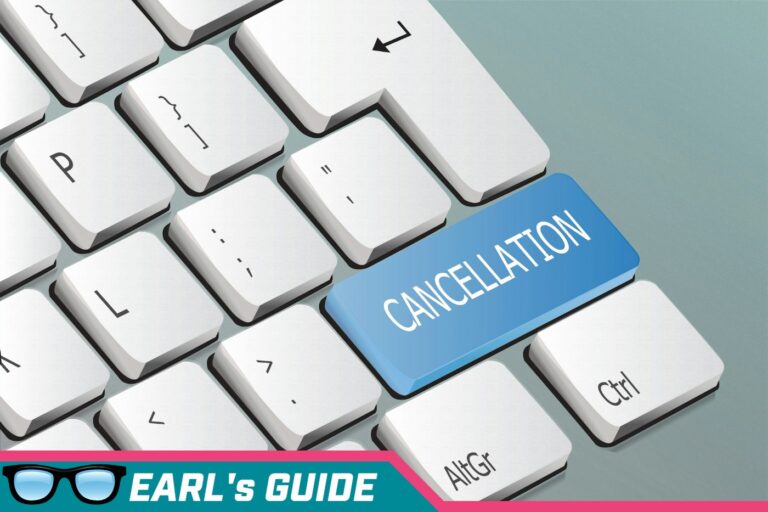Implementing an effective booking system is crucial for the smooth operation of RV parks and campgrounds. Staylist offers a comprehensive solution designed to streamline this process, making it easier for both campground staff and guests. Here’s a detailed guide on setting up your booking system on Staylist, managing your availability calendar, and adopting best practices for handling booking requests.
Setting Up Your Booking System on Staylist
1. Account Settings: Laying the Foundation
Step 1: Create Your Account Start by adding your park details into your Staylist account. Input your campground’s key information, including the name, address, contact details, and a brief description. This information serves as the foundation of your booking system, making your park discoverable to potential guests.
Step 2: Configure Payment and Communication Preferences In the Account Settings, specify your preferred payment gateways and set up your communication preferences. This ensures that financial transactions are secure and that you can efficiently communicate with guests through the system.
Step 3: Customize Branding Upload your campground’s logo and customize your information to match your branding. This consistency reinforces your brand identity throughout the booking process.
2. Reservations: Defining Booking Policies
Step 1: Deposit Policy Within the Reservations section, establish your deposit policy. Clearly define how much guests need to pay upfront to secure a booking and the conditions for deposit refunds. This transparency helps manage guest expectations and financial planning.
Step 2: Set Up Rate Codes Create rate codes that reflect different pricing strategies for various times of the year, types of stay (e.g., Nightly, Weekly or Monthly). Rates can be imported on a daily basis and can be different depending on the day of the week or the time of year. Rate codes allow for flexible pricing and help attract a wide range of guests.
Step 3: Implement Cancellation Policies Detail your cancellation policy, including any fees and notice periods required for a refund. Make sure this information is easily accessible to guests during the booking process to avoid confusion and disputes.
3. Units and Unit Categories: Organizing Your Campground
Step 1: Define Unit Categories Segment your campground into distinct unit categories based on the type of accommodation (e.g., RV sites, cabins, tent sites). This categorization helps guests easily find the type of site they’re looking for and streamlines the reservation process. This is one of the main areas that we assist with during our consultations. Doing this the wrong way can cost you thousands of dollars in lost revenue over the course of a camping season.
Step 2: Set Up Individual Units For each unit category, input specific units (sites or accommodations). Include detailed descriptions, amenities, and photos for each unit to give potential guests a clear understanding of what to expect. This detail is crucial for matching guest preferences with the right accommodation.
Step 3: Assign Rate Codes to Unit Categories Link your previously created rate codes to the relevant units and unit categories. This step ensures that pricing adjusts automatically based on the rate code applied, simplifying the booking process for both guests and staff.
More information on a proper Staylist Setup
Account Settings: Laying the Foundation
When setting up your Staylist booking system, the initial focus on Account Settings is more than a procedural step; it’s an opportunity to infuse your campground’s identity and operational ethos into the platform. This foundational setup not only enhances your park’s visibility but also streamlines your interactions with potential guests, ensuring a seamless integration of your business model with Staylist’s capabilities. Here’s a deeper look into the critical steps involved in laying the groundwork for your Staylist account and park details.
Step 1: Create Your Account – Adding Your Park Details
The journey begins with the creation of your account, a process that goes beyond mere registration. Inputting your campground’s key details—name, address, contact information, and a concise description—serves a dual purpose. First, it establishes the basic framework of your presence within Staylist, ensuring that when potential guests search for accommodations, your campground stands out with all its vital details readily accessible. This level of detail not only aids in discoverability but also provides guests with a snapshot of what your campground offers, setting the stage for their expectations.
Moreover, adding comprehensive park details allows you to position your campground accurately within the broader outdoor hospitality market. It’s essential to highlight what sets your park apart, whether it’s unique amenities, proximity to attractions, or special services exclusive to your campground. This information becomes the cornerstone of your booking system, guiding potential guests as they navigate their options.
Step 2: Configure Payment and Communication Preferences
The next step involves diving into the technical yet crucial aspects of your operations: payment and communication preferences. Choosing your preferred payment gateways is a decision that impacts the security and ease of financial transactions. This choice guarantees that booking payments are processed securely and efficiently, fostering trust and reliability in your financial dealings with guests.
Equally important is setting up your communication preferences. This setup dictates how you will engage with your guests throughout their booking journey and stay. Efficient communication channels are indispensable for confirming bookings, sending pre-arrival instructions, addressing inquiries, and maintaining ongoing engagement with your guests. By tailoring these preferences in Staylist, you ensure that every communication reflects your campground’s voice and meets your operational standards, enhancing the overall guest experience.
Accounting System Setup within Staylist
An often-overlooked aspect of integrating a reservation management system like Staylist is the synchronization with your campground’s financial operations, particularly the entry of your chart of accounts from the general ledger system. This step is crucial for ensuring that all financial transactions processed through Staylist—be it bookings, cancellations, or ancillary sales—are accurately reflected in your campground’s financial records. The seamless integration of Staylist with your chart of accounts allows for real-time financial tracking, simplifying the accounting process and providing clear insights into the financial health of your operations. It enables a streamlined workflow where financial data flows directly from Staylist into your accounting software, reducing manual data entry and the potential for errors. This setup not only enhances efficiency but also empowers campground owners with the ability to make informed financial decisions based on comprehensive and up-to-date financial data.
In a future article, we will delve deeper into the process of integrating your chart of accounts with Staylist, covering best practices for setup, ongoing management, and how to leverage this integration for financial analysis and reporting. This in-depth exploration will equip you with the knowledge to fully harness the financial management capabilities of Staylist, ensuring your campground’s financial operations are as efficient and effective as your booking system.
Step 3: Customize Branding
Customizing your Staylist account to reflect your campground’s branding is not just about aesthetics; it’s about creating a cohesive and recognizable identity across all guest touchpoints. Uploading your campground’s logo and aligning the platform’s visuals with your branding colors and style does more than make your booking page look professional—it embeds your brand into the guests’ minds.
This visual consistency ensures that from the moment potential guests encounter your Staylist page to the confirmation emails they receive, they are immersed in an experience that is distinctly yours. It reinforces your brand identity, builds brand recall, and fosters a sense of familiarity and trust. In a competitive market, such branding nuances can significantly influence guest preferences and loyalty.
Reservations: Defining Booking Policies
Establishing clear and comprehensive booking policies is essential. These policies not only ensure the smooth operation of reservations but also significantly enhance guest satisfaction by setting clear expectations. Within Staylist, setting up these policies involves several key steps, each contributing to a streamlined booking process and financial transparency.
Step 1: Deposit Policy
The first step in defining your booking policies is to establish a deposit policy. This policy dictates the upfront payment required from guests to secure a booking. The purpose of the deposit is two-fold: it commits the guest to the reservation, reducing no-shows, and provides campground owners with financial security. The deposit amount, whether it’s a fixed fee or a percentage of the total booking cost, should be clearly communicated to guests at the time of booking. Equally important is outlining the conditions under which deposits are refundable, such as cancellation within a specified notice period. Transparency in your deposit policy helps manage guest expectations and supports smooth financial planning on both ends. All of these setting can be entered into Staylist and should be defined prior to taking your first reservation.
Step 2: Rate Codes
Developing rate codes is the next crucial step. Rate codes are essentially a system to categorize your pricing strategies based on various stay durations (Nightly, Weekly, Monthly) or special conditions. These codes enable campground owners to apply different rates for different times of the year, days of the week, or even specific events, ensuring pricing flexibility and competitiveness. For instance, rates might be higher during peak seasons or weekends and lower during weekdays or off-peak times. Implementing rate codes in Staylist allows for these variations to be imported, ensuring that your pricing remains responsive to demand and market conditions.
Rate Codes in Depth:
- Calendar Months: Rates can be adjusted to align with calendar months, accommodating peak seasons with higher rates and off-peak times with lower rates.
- Rate Averaging: This technique averages the rates over a specified period, providing guests with a consistent rate even if their stay spans different pricing periods.
- Prorate Weekly Rates: For guests extending their stay beyond a week, Staylist can automatically adjust the rate to reflect a prorated weekly charge, often resulting in savings for the guest and an incentive for longer stays.
- Prorate Monthly Rates: Similarly, monthly rates can be prorated for guests planning extended stays, encouraging long-term bookings with more attractive pricing.
Step 3: Cancellation Policies
The final step involves detailing your cancellation policy. This policy should specify the notice period required for cancellations, any fees associated with canceling a reservation, and the conditions under which refunds are issued. Clarity and accessibility of your cancellation policy are paramount; it should be prominently displayed during the booking process and included in booking confirmations. A fair and transparent cancellation policy not only prevents disputes but also builds trust with your guests.
Units and Unit Categories: Organizing Your Campground
Efficiently organizing your campground into distinct unit categories and setting up individual units is not just about meticulous administration—it’s about enhancing guest experiences, streamlining the reservation process, and ultimately, optimizing revenue. This careful organization is crucial, as missteps here can lead to significant financial losses over a camping season. Here’s a comprehensive look at how to effectively manage units and unit categories within your campground, a process where the expertise of consultants like those from asktheearl.com can be invaluable. Every campground that we purchase, we end up having to redo some part of the unit category setup.
Step 1: Define Unit Categories
The first step in organizing your campground is to segment it into distinct unit categories based on the type of accommodation offered, such as RV sites, cabins, or tent sites. This segmentation is essential for several reasons. Firstly, it helps guests quickly and easily find the type of site they are interested in, enhancing user experience right from the start. Secondly, it streamlines the reservation process by simplifying the selection for potential guests, allowing them to navigate through options without confusion.
But the categorization process is more than just a convenience factor; it’s a strategic business decision. The right segmentation can significantly impact your campground’s occupancy rates and, consequently, its revenue. Categories should be defined not just by accommodation type but also considering the varying levels of amenities or exclusivities, such as waterfront sites, premium sites with additional facilities, or secluded spots for more privacy. Getting this categorization right is where consulting services, such as those provided by asktheearl.com, prove invaluable. Their expertise can guide the strategic planning required to maximize your campground’s appeal and profitability.
Step 2: Set Up Individual Units
Once you have defined your unit categories, the next step is to detail each unit within those categories. This involves inputting specific units (sites or accommodations) into your booking system and providing detailed descriptions, lists of amenities, and high-quality photos for each. This level of detail is not just about transparency; it’s about selling the experience. Each description and photo should capture the essence of what makes that unit unique, helping potential guests to envision themselves enjoying their stay.
The importance of accurately matching guest preferences with the right accommodation cannot be overstated. It affects not only their satisfaction and likelihood of return but also reviews and recommendations. A well-organized and detailed listing can reduce mismatches and the resulting dissatisfaction. Furthermore, detailed unit descriptions enable more effective use of rate codes, as they provide a clearer basis for pricing differentiation based on the features and desirability of each unit or site.
Step 3: Assign Rate Codes to Unit Categories
Linking your previously created rate codes to the relevant units and unit categories is a crucial step that ensures your pricing strategy is both dynamic and flexible. This linkage means that pricing for each unit can adjust automatically based on the rate code applied, whether that’s due to seasonal changes, day of the week, or specific promotions.
Implementing a variable pricing strategy via rate codes not only simplifies the booking process for guests and staff but also maximizes revenue potential for the campground. By assigning rate codes that reflect demand fluctuations and guest willingness to pay, campgrounds can significantly increase their profitability. Moreover, the flexibility offered by rate codes enables campgrounds to quickly respond to market changes, ensuring they remain competitive.
The precision in assigning rate codes to unit categories and individual units further highlights the necessity of the initial steps in this process. Accurate categorization and detailed unit setup provide the foundation for effective pricing strategies. During consultations, experts from asktheearl.com emphasize the strategic importance of this step, offering insights into best practices for rate code application that align with market trends and guest expectations.
Organizing your campground into units and unit categories, and assigning rate codes strategically, is a complex process with significant implications for your business. It influences not just the operational aspect of managing bookings but also directly impacts guest experiences and your campground’s financial performance. By following these steps and leveraging professional consultation, campground owners can ensure that their property is not only well-organized but also positioned for success in the competitive outdoor hospitality market. This comprehensive approach, focusing on detail and strategic planning, transforms the complex task of campground organization into a streamlined process poised to deliver enhanced guest satisfaction and optimized revenue.
In our upcoming articles and videos, we will delve deeper into the intricacies of setting up unit categories and individual units within your campground’s reservation system. This series will offer a comprehensive guide, showcasing step-by-step instructions and best practices to ensure that every aspect of your campground is optimally organized and represented in Staylist. We’ll explore advanced strategies for defining unit categories that align with guest preferences and market demand, ensuring your offerings are both attractive and competitive.
Furthermore, we’ll provide detailed insights into the meticulous process of setting up individual units, including tips on crafting compelling descriptions, selecting amenities that add value, and choosing photos that accurately showcase the unique appeal of each site or accommodation. Our future content aims to equip you with the knowledge to enhance the granularity of your campground’s online presence, allowing for a more personalized and satisfying booking experience for your guests.
Additionally, we will cover the strategic application of rate codes to unit categories, demonstrating how to leverage dynamic pricing to maximize occupancy and revenue throughout varying seasons and market conditions. These tutorials will not only include practical advice but also feature real-world examples and case studies to illustrate the principles in action.
Stay tuned to our channel and follow our publications for these in-depth explorations. Whether you’re new to Staylist or looking to refine your existing setup, our future content is designed to support your journey towards creating an efficient, guest-friendly booking environment that drives success for your RV campground or park.
These steps are just the beginning to setting up Staylist
Defining booking policies within Staylist, from deposits to rate codes and cancellation policies, lays a solid foundation for efficient reservation management and financial transparency. These policies not only streamline the booking process but also ensure that both campground owners and guests have clear expectations and understandings from the outset. As we delve deeper into each aspect, from rate codes to prorating methods, it becomes evident how Staylist’s flexibility in managing these policies can significantly benefit RV parks and campgrounds, aligning operational practices with business strategies for optimal success.
Expanding Beyond the Basics
While these steps lay the foundational aspects of your account and park details within Staylist, they also open the door to deeper customization and optimization. The initial setup is just the beginning—Staylist offers a myriad of features and tools designed to be tailored to your campground’s specific needs and operational goals. By starting with a solid foundation, you position your campground to fully leverage Staylist’s potential, from dynamic pricing to interactive site maps and beyond, ensuring your booking system is not just functional but a strategic asset in your campground’s success story.
Managing Your Availability Calendar
Daily Updates Regularly review and update your availability calendar to reflect real-time site availability. This includes adding new bookings, processing cancellations, and adjusting for extensions or early departures.
Seasonal and Event-Based Adjustments Anticipate changes in demand due to seasons, holidays, or local events. Adjust your availability accordingly to maximize occupancy and revenue. Staylist’s dynamic calendar and events makes it easy to implement these adjustments promptly.
Blocking Off Sites Use the calendar to block off sites for maintenance, ensuring guests do not book sites that are temporarily unavailable. This proactive management prevents inconvenience and potential dissatisfaction.
Best Practices for Handling Booking Requests
Prompt Responses Respond to booking inquiries and requests promptly. Quick responses not only improve the chances of securing a booking but also set a positive tone for guest interactions.
Clear Communication Ensure all communications, from initial inquiries to booking confirmations, are clear and concise. Provide guests with all the necessary details regarding their stay, including check-in procedures, park rules, and any pre-arrival requirements.
Utilizing Automation Take advantage of Staylist’s automated communication features for booking confirmations, reminders, and follow-up messages. Automation ensures consistency in communication and saves time for staff.
Personalization Where possible, personalize the booking experience. Use the guest’s name, and consider acknowledging repeat guests or special occasions noted during the booking process. Personal touches can significantly enhance guest satisfaction.
Feedback Loop Encourage and monitor feedback from guests regarding the booking process. Use this feedback to continuously improve your system, addressing any pain points and enhancing the overall user experience.
Successfully implementing and managing a booking system with Staylist can transform the operational efficiency of your RV park or campground. By carefully setting up your account, diligently managing your availability calendar, and adhering to best practices for handling booking requests, you pave the way for a smoother operational workflow and an enhanced guest experience. Staylist not only simplifies the booking process but also provides campground owners and managers with the tools needed to achieve success—from setup to success.

Robert Earl
Robert EarlRobert has 20+ years of experience as a Real Estate Agent, Coach & Digital Marketer. Robert Earl is passionate about teaching and empowering others to pursue their dreams and create sustainable income. Whether through a career in real estate, affiliate marketing, niche blogging, or transforming campgrounds into thriving communities, his proven strategies and techniques have helped numerous individuals and businesses succeed. Based on his years of experience and knowledge in the online marketing industry, along with his hands-on management in the Real Estate & RV Park sector, he has crafted a unique and effective approach to personal and professional growth. In addition to his business pursuits, Robert is also a CrossFit Online Level 1 Trainer (CF-OL1) and enjoys fitness activities, including Rucking workouts while traveling the country. His multifaceted career showcases his dedication to growth, innovation, and the pursuit of excellence in various domains.




